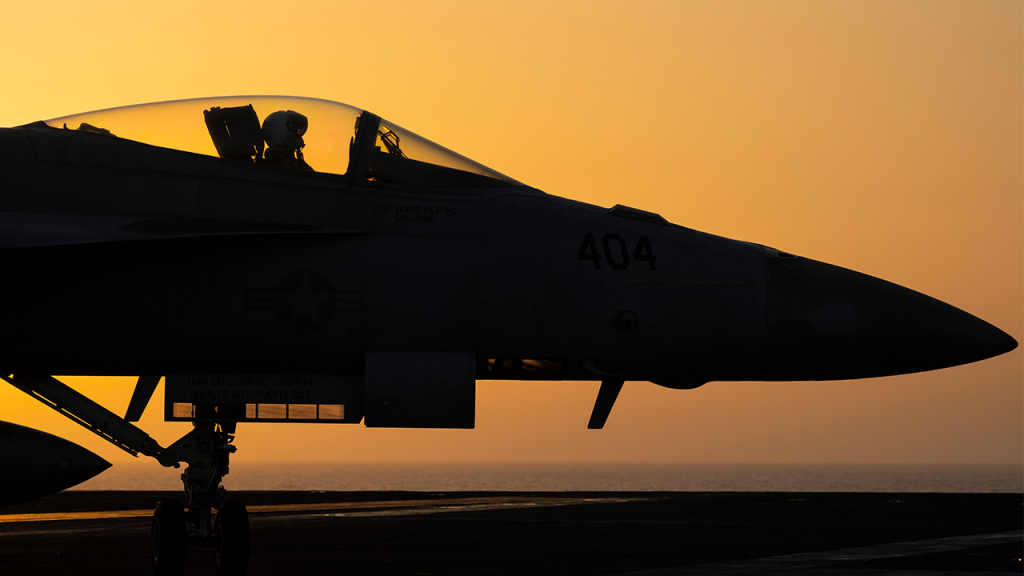The Red Sea incident involving the downing of a U.S. Navy F/A-18 Super Hornet by friendly fire underscores the complex and often precarious operational environment in this strategically vital waterway. The incident, which saw two U.S. pilots ejecting from their aircraft with one sustaining minor injuries, occurred amidst escalating tensions and heightened military activity in the region. While the specific mission of the downed aircraft remains undisclosed, the incident transpired during a period of U.S. airstrikes targeting Houthi rebels in Yemen, further highlighting the volatile and unpredictable nature of the ongoing conflict. This incident serves as a stark reminder of the inherent risks involved in military operations, even in seemingly controlled environments, and underscores the need for stringent protocols and constant vigilance to prevent such occurrences.
The downing of the F/A-18, assigned to the “Red Rippers” of Strike Fighter Squadron 11, unfolded against a backdrop of increased maritime insecurity in the Red Sea, primarily driven by Houthi attacks on commercial shipping. These attacks, often involving unmanned aerial vehicles (UAVs) and waterborne improvised explosive devices (WIEDs), pose a significant threat to international trade and navigation, disrupting crucial supply chains and jeopardizing regional stability. The presence of U.S. and European naval forces in the Red Sea aims to deter and counter these threats, ensuring the safety of maritime traffic and maintaining freedom of navigation. However, the friendly fire incident demonstrates that even with the presence of sophisticated military assets and established protocols, the risk of unintended consequences remains a constant challenge.
The circumstances surrounding the incident reveal a series of unfortunate events that culminated in the mistaken targeting of the F/A-18 by the USS Gettysburg, a guided-missile cruiser operating as part of the USS Harry S. Truman Carrier Strike Group. While the exact details leading to the misidentification and subsequent engagement remain under investigation, the incident highlights the potential for human error and systemic failures, even within highly trained and technologically advanced military organizations. The incident serves as a critical learning opportunity for the U.S. Navy, prompting a thorough review of operational procedures, communication protocols, and rules of engagement to prevent similar occurrences in the future.
The Red Sea, a narrow but strategically vital waterway connecting the Mediterranean Sea to the Indian Ocean, has become an increasingly contested maritime domain. Its proximity to Yemen, a nation embroiled in a protracted civil war, has transformed the region into a hotbed of instability and conflict. The Iranian-backed Houthi rebels, who control significant portions of Yemen, have repeatedly targeted commercial vessels transiting the Red Sea, posing a direct threat to international shipping and undermining regional security. This escalating maritime insecurity has prompted increased military presence from international actors, including the United States and its allies, in an effort to safeguard vital shipping lanes and protect commercial interests. The presence of multiple naval forces operating in close proximity, however, adds to the complexity of the operational environment, increasing the potential for miscalculation and unintended consequences, as evidenced by the friendly fire incident.
The ongoing conflict in Yemen, with its multifaceted complexities and involvement of various regional and international actors, further exacerbates the challenges in the Red Sea. The Houthi rebels, supported by Iran, have employed increasingly sophisticated tactics in their attacks on shipping, demonstrating a growing capability to disrupt maritime traffic and project power in the region. The U.S. and its partners have responded by increasing their naval presence and conducting targeted airstrikes against Houthi positions, aiming to degrade their capabilities and deter further attacks. This intricate interplay of military actions, coupled with the volatile political landscape, creates a highly dynamic and unpredictable environment, raising the stakes for all actors involved. The friendly fire incident serves as a poignant reminder of the potential for unintended escalation and the urgent need for de-escalation and a peaceful resolution to the Yemeni conflict.
The incident involving the downing of the F/A-18 by friendly fire underscores the critical importance of comprehensive investigations and transparent communication following such events. A thorough examination of the circumstances leading to the incident is crucial not only to understand the specific factors that contributed to the error but also to identify broader systemic issues that require attention. Open and honest communication with the public and the international community is essential to maintain trust and confidence in the military’s ability to operate responsibly and effectively, particularly in complex and challenging environments. The lessons learned from this incident will undoubtedly inform future operational procedures and training protocols, ultimately contributing to enhanced safety and preventing similar tragedies in the future.

